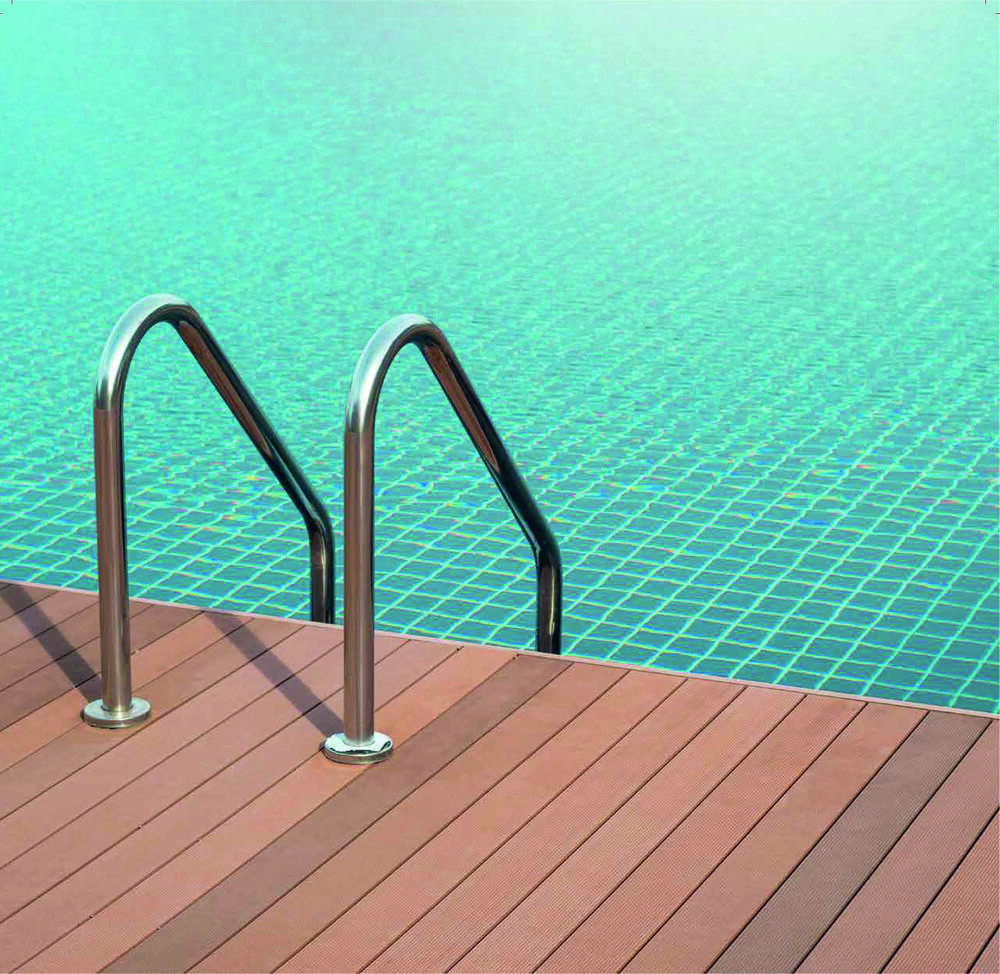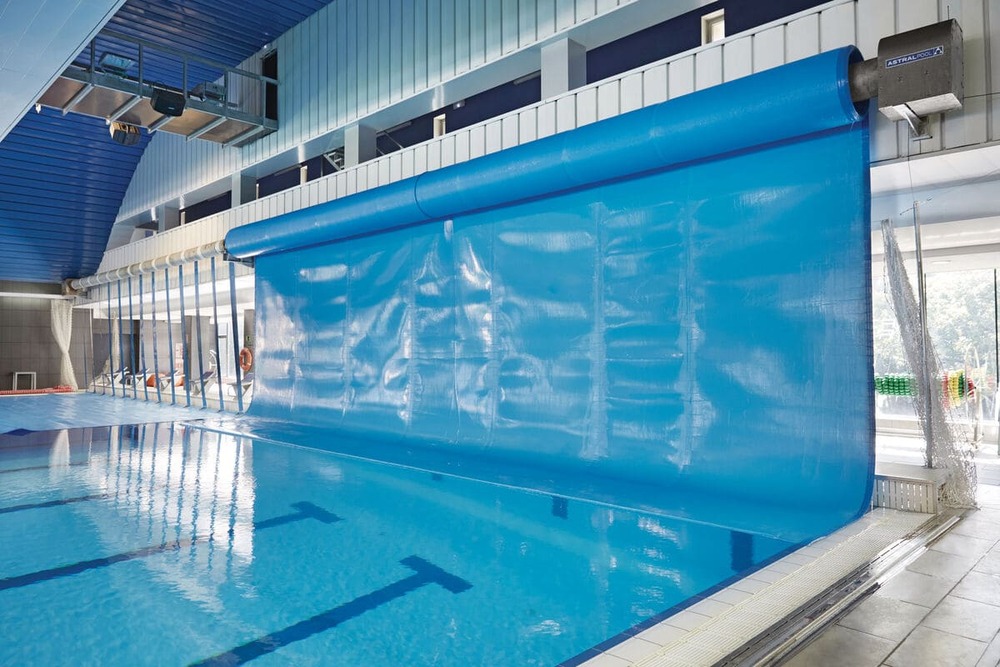Pool safety equipment represents a key concern for correctly managing any aquatic installation, and its importance is growing as the emphasis on these facilities’ safety and regulatory compliance extends.
With rising awareness of pool-related accidents and the growing adoption of advanced safety solutions across commercial and public swimming facilities, the global pool safety equipment market is experiencing significant growth, projected to reach $2.4 billion by 2032. In fact, the market’s compound annual growth rate of 6.5% between 2024 and 2032 underscores the critical importance of implementing comprehensive safety measures in modern aquatic environments.
In this context, this article explores the fundamentals of pool safety equipment, from the impact of regulations and industry standards to the top items that any facility should consider for safety.
Dive deeper with the eBook
Pool safety regulations and standards and their impact on pool safety equipment
Regulatory compliance and industry standards lie at the heart of putting together the right pool safety equipment kit.
The landscape of pool safety regulations encompasses multiple layers of compliance requirements that facility owners and operators must navigate. On the one hand, international standards such as those set by ANSI/APSP (American National Standards Institute/Association of Pool & Spa Professionals) provide comprehensive guidelines for pool safety equipment installation and maintenance. On the other hand, these standards work in conjunction with local building codes and health department regulations to create a framework for safe aquatic operations.
On top of the standards mentioned above, the Americans with Disabilities Act (ADA) mandates specific requirements for pool accessibility, including proper entry and exit points for individuals with disabilities. Compliance with these regulations requires careful consideration of equipment selection and installation methods to ensure universal access while maintaining safety standards.
In this context, professional contractors and facility operators must stay current with evolving safety regulations, as non-compliance can result in substantial fines and facility closure.

Understanding risk factors in different pool environments
The diverse types of aquatic facilities present differentiated needs and requirements when it comes to pool equipment and accessories, and pool safety equipment is no exception. Some broad takeaways on these diverse needs include:
- Commercial pools must face unique challenges due to high user volume and diverse patron demographics.
- Hotels and resorts should consider additional factors such as nighttime security and unsupervised access attempts
- Sports clubs typically need to address specific requirements for competitive swimming and training activities.
- Water parks present complex safety scenarios due to multiple attraction types and varying water depths. The integration of proper safety equipment becomes particularly crucial in these environments where different age groups and swimming abilities converge.
- Spa facilities require specialized attention to safety equipment due to higher water temperatures and therapeutic use considerations. Additionally, the combination of wet surfaces and relaxed patrons necessitates robust safety measures to prevent accidents.
The top pool safety equipment for risk prevention: the basic, the advanced and the emerging trends
3 non-negotiable essentials in pool safety equipment
1. Pool fencing and barriers
The implementation of effective barriers represents the first line of defense, and their importance is fundamental. In fact, safety barriers and covers represent the fastest-growing segment in pool safety equipment, with a projected CAGR of 7.2% through 2030, as seen in the global pool equipment market report by MarkNTel Advisors.
Modern pool fencing solutions must meet specific height requirements, which typically involve a minimum of 1.2 meters, with self-closing and self-latching gates that prevent unauthorized access.
Glass fencing has gained popularity in luxury facilities due to its unobstructed views and elegant appearance. These systems utilize tempered safety glass panels with specialized mounting hardware that ensures structural integrity while maintaining aesthetic appeal.
2. Automatic and manual pool covers
Pool covers serve multiple functions beyond basic safety, making them an essential investment for facility operators.
In this category, automatic covers provide the highest level of protection through motorized operation, allowing quick deployment by staff members.
Semi-automatic systems offer a balance between convenience and cost-effectiveness, typically utilizing a mechanical assist system that reduces the physical effort required for operation. These systems require proper training for staff to ensure consistent and correct usage.
Manual covers, while more labor-intensive, remain a viable option for smaller facilities or those with limited budgets. The key is selecting appropriate materials and ensuring proper installation of tracking systems and anchoring points.
3. Non-Slip surfaces and decking
Surface safety represents a critical component of pool facility design, as slip and fall incidents account for a significant percentage of pool-related injuries. In this context, picking the appropriate materials must balance safety requirements with practical considerations of maintenance and longevity.
The two most common choices include:
- Textured tiles with proper certification for wet-area use: they provide excellent traction while maintaining an attractive appearance. Installation patterns should account for water flow and drainage to prevent pudding in high-traffic areas.
- Composite decking materials: these materials have evolved to offer superior slip resistance and reduced maintenance requirements. They often incorporate antimicrobial properties, contributing to overall facility hygiene.

3 advanced safety solutions for pool facilities
1. Pool alarms and detection systems
Modern pool facilities increasingly rely on sophisticated detection systems to enhance safety monitoring. Such is the case of surface wave detection technology, which can identify unauthorized pool entry, while subsurface motion sensors provide continuous monitoring of underwater activity.
Advanced systems now incorporate AI-powered cameras that can identify potential drowning situations through pattern recognition. A must for these systems is that they must be properly calibrated and maintained to ensure reliable operation and minimize false alarms.
Integration with facility management systems allows for centralized monitoring and rapid response to potential safety incidents. Staff training must include proper interpretation of system alerts and appropriate response protocols.
2. Safety ladders, handrails, and steps
As a general rule, proper entry and exit points require careful consideration of user needs and safety requirements. Here, key design elements to take into account include:
- Structural integrity: materials and mounting systems must withstand constant use and exposure to pool chemicals
- Ergonomic design: proper spacing and positioning to accommodate users of different abilities. Accessibility elements must take into account users with reduced movement capabilities.
- Visual indicators: clear markings and depth indicators integrated into step and ladder systems.
3. Life-saving and rescue equipment
It’s worth noting that proper storage and maintenance of this equipment directly impacts its effectiveness during critical situations. As such, essential lifeguard and rescue equipment must be strategically placed around the pool facility to ensure quick access during emergencies.
But that’s not all. Facility operators should establish clear protocols for regular inspection and replacement of safety equipment, and properly document these processes, which helps demonstrate due diligence in maintaining safety standards.
Emerging trends in pool safety
1. Smart pool technology and automation
The integration of IoT devices and automated monitoring systems represents the next evolution in pool safety, as these systems are proving worthwhile in providing real-time data on water quality, equipment status, and facility usage patterns.
In fact, recent swimming pool equipment market research reveals that smart safety technologies are expected to see the highest growth rate among all equipment categories, with AI-powered monitoring systems projected to grow at 8.3% CAGR through 2032.
This trend is particularly strong in luxury hotels and high-end commercial facilities, where investment in advanced safety features is becoming a key differentiator. In this segment, wearable devices for swimmers should also be considered, as they offer personal safety monitoring capabilities that can be particularly valuable for facilities catering to high-risk users or therapeutic programs.
2. Sustainable and eco-friendly safety solutions
Environmental consciousness in swimming pools extends to safety equipment selection, with manufacturers developing products that minimize environmental impact while maintaining high safety standards. In this context, opting for energy-efficient systems means reducing operational costs while contributing to facility sustainability goals.

What are the best practices for designing a safer pool environment?
Integrating safety features from the design stage
Successful pool safety integration begins during the initial design phase. In fact, collaboration between architects, safety consultants, and facility operators is the key to ensure that safety features enhance rather than detract from the overall design aesthetic.
Proper planning not only allows for the seamless incorporation of required safety elements while maintaining the desired atmosphere of the facility: this approach often results in cost savings compared to retrofitting safety features after construction.
Training and staff preparedness
Comprehensive training programs must address both routine safety procedures and emergency response protocols. In order to do so, regular updates and refresher courses help maintain staff competency and awareness of safety requirements.
Documentation of training activities and staff certifications is fundamental here, as it provides important liability protection for facility operators. This should include records of specific equipment training and demonstrated competency.
Why the right pool safety equipment matters
Investing in comprehensive pool safety equipment systems is a critical responsibility for facility operators and designers. In fact, the continued growth of the pool safety equipment market as seen across the article reflects both the importance of these investments and the ongoing innovation opportunities in safety solutions.
But success in maintaining safe aquatic facilities requires ongoing commitment.
In this quest, the integration of traditional safety measures with emerging technologies creates multiple layers of protection for pool users, and an opportunity for operators to elevate the installations’ safety.
In this quest, facility operators must remain proactive in evaluating and updating their safety systems to meet changing user needs and regulatory requirements, picking the right pool safety equipment and integrating it among human teams and protocols.
At Fluidra, we help pool professionals design modern, efficient and sustainable installations that put bathers’ enjoyment and safety at the center.
